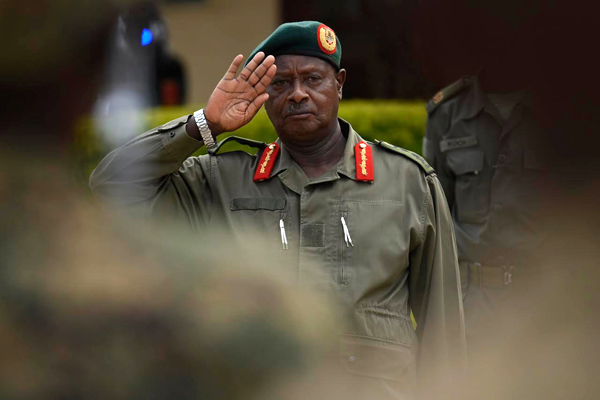Kampala, Nairobi attacks show we are unknowing state spies
Saturday November 20 2021
Police cordon off the crime scene at Parliament Avenue in Uganda's capital Kampala. PHOTO | MORGAN MBABAZI | NMG
On Tuesday, twin suicide bombings claimed by the Islamic State terror group killed four people and injured three dozen in the Ugandan capital Kampala.
The attacks were the latest in a chain of bombings targeting Kampala and its surrounding areas in the past month, and the most deadly in over 10 years.
On July 10, 2010, bombings against fans watching the 2010 Fifa World Cup final at two locations in Kampala left 74 people dead and 85 injured.
Somalia-based militant group Al-Shabaab claimed responsibility for the attacks as retaliation for Uganda’s role in the African Union peacekeeping mission in the country, Amison.
A chilling video clip from a CCTV camera of the blast near the Central Police Station in the heart of Kampala shows a man carrying a rucksack walking by, then he gets engulfed in a big explosion. With that, he became a “martyr” and presumably went off to heaven to claim his 72 virgins.
The video had an uncanny similarity to that showing another suicide bomber, from the January 15 to 16, 2019 attack on the DusitD2 office and hotel complex in Nairobi’s Westlands suburb.
Al-Shabaab claimed responsibility for the attack, which left more than 20 people dead.
A suicide bomber-to-be is shown walking in the middle of the complex, with a rucksack, and when he arrived in front of an area next to a packed restaurant, went kaboom.
His comrades then immediately attacked the place with assault weapons from the outside.
If the November 16 Kampala bombers had waited just two months, they would have attacked on the third anniversary of Dusit, and created a bigger East African terror narrative (Imagine the headline “Terrorists strike Ugandan capital on 3rd anniversary of Nairobi Dusit attack”). That they didn’t is a good sign. It suggests that they might not be co-ordinated, a skill that is one of the terrorists’ strong points.
There is another, unintended, story from both the Kampala and Dusit attacks; they pointed to the fact that Uganda and Kenya, like many others, are growing as both surveillance states and societies. Nearly 22 years ago, an assassin went inside the Democratic Republic of Congo’s State House and killed president Laurent Kabila as he watched his favourite cartoon show on TV.
Neither a photograph nor video of the killer has ever been publicly released, and it’s doubtful it exists.
Today, the video of the assassination, or at a minimum the killer exiting the scene of the crime, would have gone viral on social media in less than an hour.
Likewise, like elsewhere in the world, in Uganda and Kenya, some of these videos are off state surveillance along streets and alleys. But many of them are from regular citizens going about their lives with their phones capturing every moment of it.
Several terror suspects in the Dusit attack were caught from social media posts and or their friends’ pages, all posted when they weren’t aware the material would turn into incriminating evidence.
It’s one of the inconvenient realities of the modern surveillance state. All of us who have smartphones and post on social media are its unpaid employees.
Charles Onyango-Obbo is a journalist, writer, and curator of the “Wall of Great Africans”. Twitter@cobbo3
